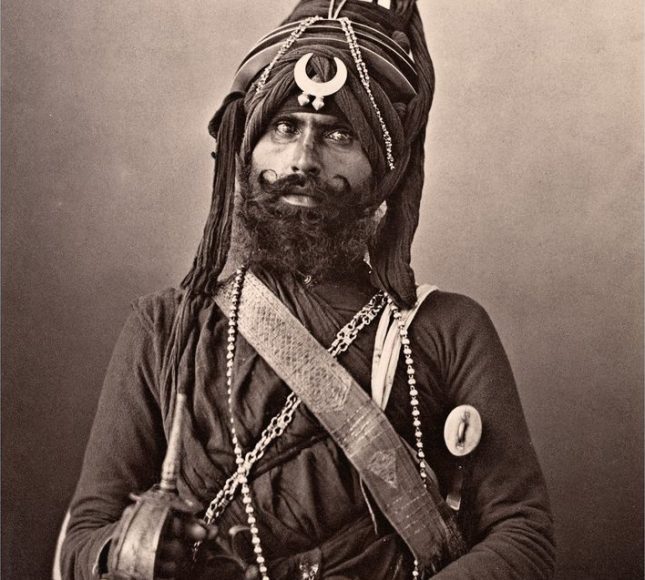AKALI, a term now appropriated by members of the dominant Sikh political party, the Shiromani Akali Dal, founded in 1920, and groups splitting from it from time to time, was earlier used for Nihangs (q.v.), an order of armed religious zealots among the baptized Sikhs. The word Nihang is from the Persian nihang meaning crocodile, alligator, shark or water dragon, and signifies qualities of ferocity and fearlessness. The term Akali is originally from Akal, the Timeless One.
Guru Nanak (1469-1539) described God as Akal Murati, the Eternal Form. Guru Hargobind (1595-1644), who adopted a royal style, named his seat at Amritsar Akal Takht. the Everlasting Throne.It was, however, Guru Gobind Singh who popularized the term Akal as an attributive name of God. A set of his hymns is entitled Aka J Ustati (God`s Praises). When he instituted, in 1699, the Khalsa, a body of warriors initiated through baptism of the double edged sword, he gave them the warcry “Sat Sri Akal !” (the True, the Radiant, the Timeless One).
It was probably from this warcry that the Singhs or initiated Sikhs, variously called Bhujangis and Nihangs, came also to be known as Akalis. Although the Nihangs trace their origin from Sahibzada Fateh Singh, the youngest son of Guru Gobind Singh or from Bhai Man Singh, a Sikh of the Tenth Guru, the earliest use of Akali as a title appears with the name of Naina Singh, an eighteenth century Nihang warrior and a junior leader in the Shahid misl.
Akali Naina Singh is credited with introducing the tall pyramidal turban common among the Nihangs to this day. Akalis became prominent as an organized force under Akali Phula Singh (d. 1823), one time ward and disciple of Naina Singh. Phula Singh`s Akalis formed the crack brigade in Maharaja Ranjit Singh`s army as well as the custodians of the nation`s conscience and morals.
After the occupation of the Punjab by the British in 1849, Akali regiments were disbanded and, military service being their only career, their numbers dwindled rapidly.In the 1892 census only 1,376 persons were returned as “Sikh Akalis or Nihangs,” and in 1901 this number further came down to a bare 431, besides 136 who registered themselves as Akalis by caste.Of these 457 were males and 110 females.
During the Gurdwara reform movement (1920-25), the term Akali came to be associated with the reformers who organized themselves into a political body, the Shiromani Akali Dal. Even the reform movement itself was referred to as the Akali movement. A rival body set up in mid 1930`s also named itself the Central Akali Dal. The Nihangs are no longer called Akalis. The last prominent Nihang known as an Akali was Akali Kaur Singh (1886-1953).
References :
1. Gulati, Kailash Chander, The Akalis: Past and Present. Delhi, 1974
2. Harbans Singh, The Heritage of the Sikhs. Delhi, 1983
3. Cunningham,J.D., A History of the Sikhs. London , 1849



